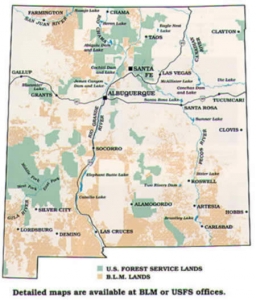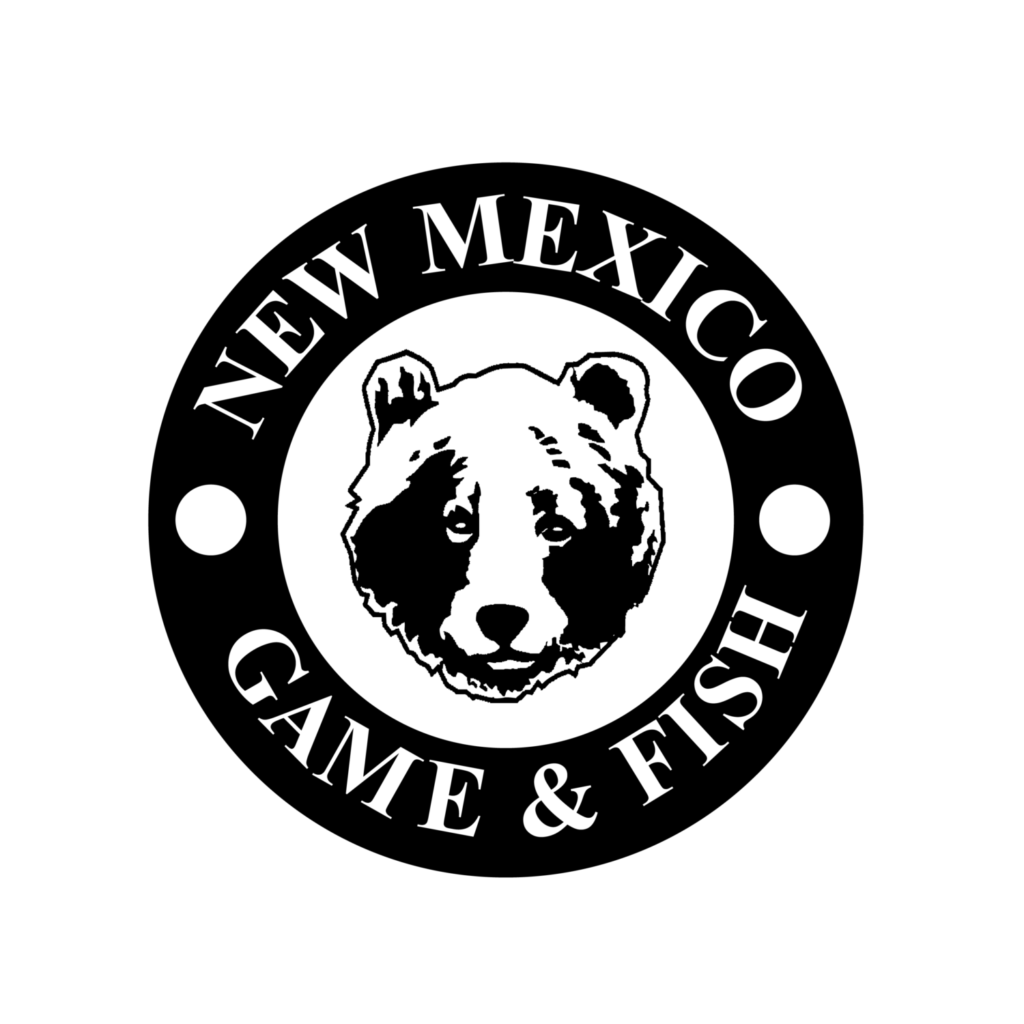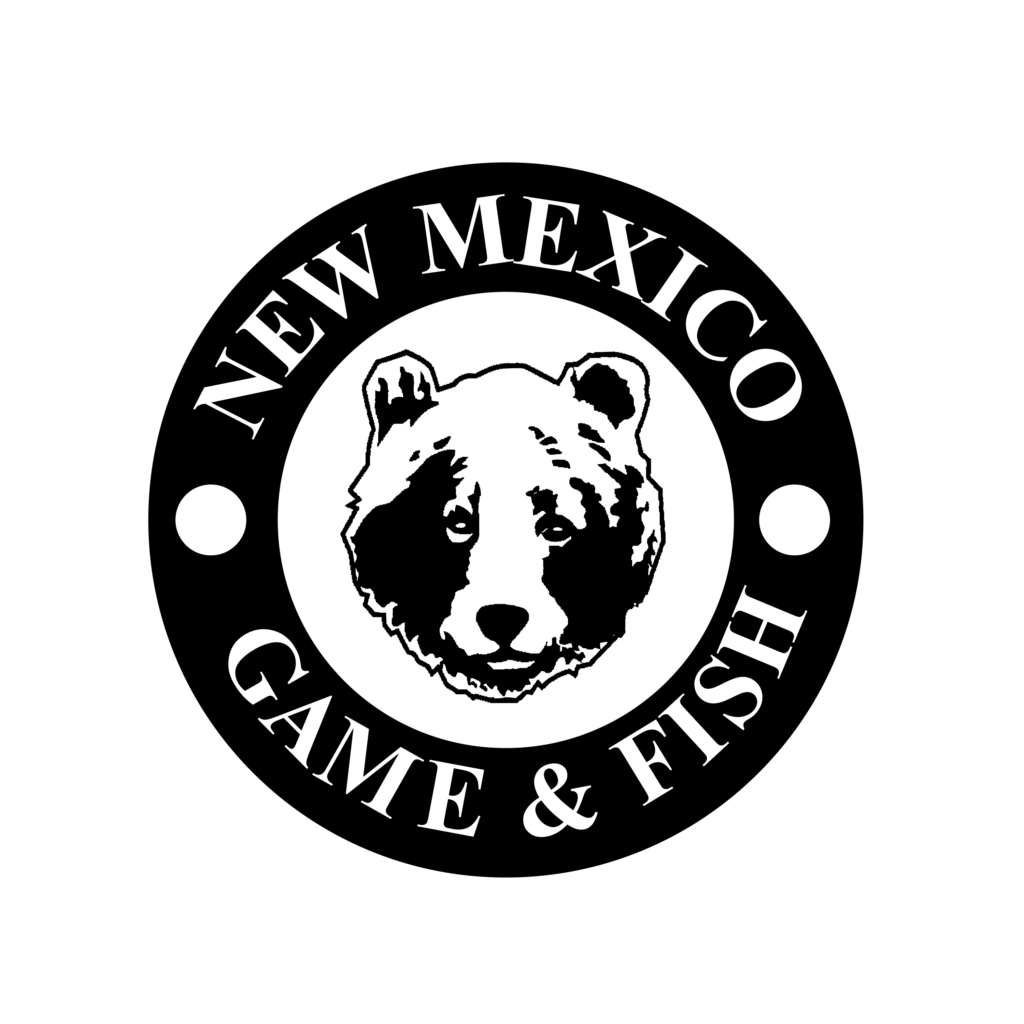Habitat Stamp Program
The New Mexico State Game Commission (SGC), under appropriate authorities, adopted NMAC 19.34.6, establishing the New Mexico Habitat Stamp Program (HSP). The program’s purpose is to plan, develop, and coordinate conservation and rehabilitation projects on Bureau of Land Management (BLM) and U.S. Forest Service (USFS) managed lands that benefit fish and wildlife populations. The program is a partnership between the New Mexico Department of Game and Fish (NMDGF), the BLM and the USFS. The HSP is bound to follow NMAC 19.34.6, as well as direction provided by the State Game Commission.
Support wildlife conservation:
click the logo at any time to purchase a Habitat Stamp.
Upcoming Meetings
[ai1ec post_id=”43960″]
Current Habitat Stamp Project Opportunities
Current Habitat Stamp Project opportunities for CAC and public review to be prioritized at August 8th meeting.
Program Structure
Annual Project Prioritization Meeting (Open to Public)
Annually, in Mid August
Every August, the Department will hold a project prioritization meeting. In this meeting, the public can comment on proposed projects, and these projects will be discussed and prioritized for funding by the Citizen Advisory Committee (CAC). Detailed project proposal write-ups will be available to the public and the CAC on the Department website at least one month prior to this August meeting. Projects that are prioritized for funding will be implemented using Habitat Stamp Program funds and updates on project progress will occur at the next project progress meeting in February.
Annual Progress Meeting (Open to Public)
Annually, in Mid February
Every February, the Department will hold an ongoing project progress meeting. In this meeting, the status of currently funded projects will be discussed and an update on the development of the upcoming year’s project opportunities will be provided. Comment will be received from the public, and advice will be provided to the agencies by the CAC.
Project Development:
Ongoing
Habitat conservation and restoration is the goal of the Habitat Stamp Program. Staff from the New Mexico Department of Game and Fish, the Bureau of Land Management and the United States Forest Service work together collaboratively to identify and develop project opportunities to improve and restore fish and wildlife habitat throughout New Mexico. This collaboration occurs on an ongoing basis. Project opportunities are developed annually, and these opportunities will be uploaded to the Habitat Stamp Program website each July for public and CAC review. These projects are then discussed and prioritized for funding by the CAC at each August project prioritization meeting.
HSP Coordinator
The HSP Coordinator is an employee of the NMDGF and acts as lead Department representative for the Habitat Stamp Program to develop, track, implement, and inspect projects that utilize HSP funding. The Manager works directly with BLM and USFS representatives and with contractors to implement projects.
HSP Partners
The HSP Partners are employees of the BLM and USFS engaged in wildlife habitat restoration activities, in addition to conservation organizations and members of the public interested in habitat conservation and restoration.
Citizen Advisory Committee (CAC)
CAC appointments are made by the SGC in accordance with NMAC 19.34.6. The CAC is made up of nine members and is authorized to provide citizen advice and to prioritize eligible projects for HSP funding. CAC members are expected to represent the interests of the stamp holders, public land users, and are encouraged to engage in outreach activities. CAC members are volunteers, and may resign at any time of their choosing.
Project Opportunities
Projects are developed by NMDGF and HSP partners and must include:
• Clearly defined and described actions.
• Relevant historical information, such as past land management actions, past natural disturbances, and recent land uses.
• Comprehensive and Itemized proposed use of funds.
• Comprehensive analysis to demonstrate purpose and need for project.
The HSP serves as a supplemental funding mechanism for fish and wildlife conservation projects. Project opportunities that are presented to the CAC are planned and developed collaboratively between the NMDGF, BLM, and USFS. Projects are developed taking into consideration advice and guidance provided by the CAC to the three agencies.
It is required by NMAC 19.34.6 that a minimum of 50% of HSP project expenditures support projects that benefit fish. This will be tracked and presented during public meetings, and in annual completion reports.
Daniel Lusk
HSP Coordinator
New Mexico Dept. of Game and Fish
Cellphone: 575-649-1658
daniel.lusk@dgf.nm.gov
Documents
Required Stamp Areas
Areas the Habitat Stamp is Required/Not-Required
 Habitat Stamp Cost: $10
Habitat Stamp Cost: $10
A Habitat Stamp is required, in addition to the proper license, to fish, hunt, or trap on US Bureau of Land Management (BLM) and US Forest Service (USFS) lands and waters in New Mexico. Please see the Current Year Hunting Rules and Information Booklet for complete definitions about Habitat Stamp Possession Rules.
Areas the Habitat Stamp is Required
The stamp is required on the following federal lands:
- Carson National Forest
- Cibola National Forest
- Coronado National Forest
- Gila National Forest
- Lincoln National Forest
- Santa Fe National Forest
- Kiowa National Grasslands
- All BLM properties (except those in Game Unit 28)
Areas the Habitat Stamp is Not Required
The stamp is not required on the following lands:
- County lakes, streams and properties
- Indian pueblos and reservations
- Municipal lakes, streams and properties
- NM Department of Game and Fish big game and waterfowl areas; and department fishing areas not located on USFS lands
- NM State School Trust lands
- Private lands
- US Army Corps of Engineer lakes and properties
- US Bureau of Reclamation lakes and properties
- US Fish and Wildlife Service refuges
- US military installations
The following lists point out some specific public areas where the stamp is not required.
Northwest New Mexico
|
Northeast New Mexico
|
Southwest New Mexico
|
Southeast New Mexico
|


